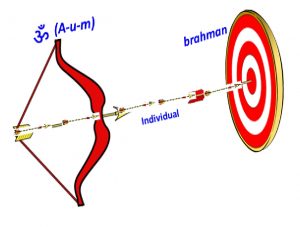 [Note: Dennis posted at the other thread a cryptic comment that says, “… whether self-enquiry can reveal the true self. If you say it can, then what is the pramANa?” My response to it has become too long and because I expect that there could be questions or more comments on my comment, I have taken the liberty to make my comment into a separate Post.]
[Note: Dennis posted at the other thread a cryptic comment that says, “… whether self-enquiry can reveal the true self. If you say it can, then what is the pramANa?” My response to it has become too long and because I expect that there could be questions or more comments on my comment, I have taken the liberty to make my comment into a separate Post.]
The remark that was recently posted by Dennis hinting that vicAra cannot possibly be a valid means for Self-realization leaves one rather nonplussed. It, at one stroke, blunts the entire approach of jnAna mArga, which is a highly valued and respected method for liberation in Shankara tradition. Or in order not to make that statement invalid, one has to force oneself to assign a very narrow meaning to the word pramANa conforming to the concept that the author has in his mind rather than what is understood to be a pramANa in scriptural literature.

